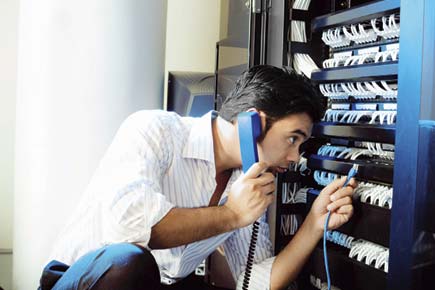Think of your usual impression of cable operators they don’t declare revenues, siphon money off and starve the rest of the TV business of its fair share

 Think of your usual impression of cable operators they don’t declare revenues, siphon money off and starve the rest of the TV business of its fair share. They did, till recently. But direct-to-home or DTH and digitisation has changed them. More than a decade after DTH came into India, cable has lost ground. Of India’s 160 million TV homes, only 100 million are now cable homes. The rest have gone to DTH, and continue to go. So when the government amended the Cable Act to make digitisation mandatory, while there were protests, most accepted that they would have to move with the times.
Think of your usual impression of cable operators they don’t declare revenues, siphon money off and starve the rest of the TV business of its fair share. They did, till recently. But direct-to-home or DTH and digitisation has changed them. More than a decade after DTH came into India, cable has lost ground. Of India’s 160 million TV homes, only 100 million are now cable homes. The rest have gone to DTH, and continue to go. So when the government amended the Cable Act to make digitisation mandatory, while there were protests, most accepted that they would have to move with the times.

Almost every multi-system operator says that in markets where they sell cable broadband, cable operators are more than willing to declare 100 per cent revenues and share them. This then is the time to push for cable broadband; digitisation will happen as a by-product. Representation Pic/Getty Images
ADVERTISEMENT
About two months ago IndusInd Media and Communications, a large Mumbai-based cable company, commissioned a survey across 1,600 operators in eight states. It discovered that cable operators wanted the MSOs or multi-system operators (firms like IndusInd or Hathway that wholesale TV signals) to help them understand pricing and packaging. They wanted help in competing with DTH operators who were taking away their subscribers.
If this is true, then the government can kill two birds with one stone — make India fully digital and allow for a competitive broadband market to take off — with a couple of simple policy changes. One, let go of pricing control on cable. Two, relax the norms for cable operators to get an Internet Service Provider licence. These two moves will unleash a wave of investment into cable broadband, considered to be the best technology to get good quality bandwidth into homes.
Note that in the US, more than two-thirds of the broadband homes are served by cable. In Singapore the figure is just over 31 per cent, in Korea over 22 per cent and so on. In India, the figure is just over 5 per cent.
Funnily enough, in India it has been assumed that only telecom companies can give good broadband. Reliance’s 4G plans and Airtel fibre pipelines excite more talk than the rising numbers for cable broadband. Cable, say telecom enthusiasts, is a dying technology. Most point to the troubles with digitisation as proof. More than three years after it was mandated, only 25 million cable homes have been digitised and carriage fees remain where they were.
But that is only part of the story. The other part is that more than 95 per cent of the homes in phase 1 (metros) and 2 (38 towns) have a set top box and can be tracked and reached. Even with this half-done digitisation, MSOs’ share of revenues has risen. Most importantly, there is a growth in cable broadband with its higher average revenues per user or ARPUs. Almost every MSO says that in markets where they sell cable broadband (and therefore get more money per subscriber) cable operators are more than willing to declare 100 per cent revenues and share them.
This then is the time to push for cable broadband; digitisation will happen as a by-product.
About 60 per cent cable operators in India have political affiliations. This makes the industry a source of political funding and a strong opponent against any move towards transparency. Yet, in this large, chaotic, unorganised market we have reached 25 million cable homes. And the threat of losing homes to DTH and increased revenues from cable broadband has forced cable operators to think differently about their business as the survey mentioned above shows. This then is the time to push for some real change and faster broadband.
The writer is a media specialist and author. Follow her on twitter @vanitakohlik
 Subscribe today by clicking the link and stay updated with the latest news!" Click here!
Subscribe today by clicking the link and stay updated with the latest news!" Click here!







